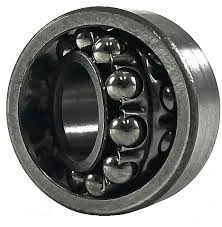
Dec . 03, 2024 18:45 Back to list
what is a thrust bearing in a car
Understanding Thrust Bearings in Cars
When discussing the intricate workings of a car's engine and drivetrain, one component that often flies under the radar is the thrust bearing. Though small in size relative to the whole vehicle, thrust bearings play a crucial role in maintaining the smooth operation of various mechanical systems within a car. This article will explain what a thrust bearing is, its function in a vehicle, and why it is essential for automotive performance.
What is a Thrust Bearing?
A thrust bearing is a type of specialized bearing designed to manage axial loads, which are forces acting parallel to the axis of rotation. In simpler terms, thrust bearings support components that experience considerable pushing or pulling forces along their shafts. These bearings come in various designs, including ball bearings and roller bearings, each suited for specific applications.
In a car, thrust bearings are typically located in the transmission, engine, and sometimes in the wheel assemblies. They are engineered to provide reduced friction, facilitate smooth motion, and ensure that the components maintain their intended positions during operation.
Functions of Thrust Bearings in Cars
1. Load Support The primary function of a thrust bearing is to support axial loads that arise during the operation of various engine and drivetrain components. For instance, in a manual transmission, the thrust bearing helps manage the pressure applied to the gearbox during shifts.
2. Friction Reduction A critical aspect of automotive engineering is reducing friction, which can lead to energy losses and wear. Thrust bearings are designed to minimize friction between moving parts, enhancing efficiency and prolonging component life. By enabling smooth sliding or rolling motion, they play a significant role in the overall performance of the vehicle.
3. Position Maintenance Thrust bearings help maintain the alignment of components. In an engine, for example, these bearings keep the crankshaft in its designated position, preventing excessive lateral movement that could result in damage or misalignment.
what is a thrust bearing in a car

4. Vibration Dampening A secondary function of thrust bearings is to help dampen vibrations that occur during operation. This vibration dampening creates a more comfortable driving experience and protects sensitive components from the detrimental effects of excessive vibrations.
Importance of Thrust Bearings in Vehicle Performance
The performance and longevity of a car are closely tied to the proper functioning of every component, including thrust bearings. When these bearings fail, it can lead to a cascade of mechanical failures within the vehicle.
1. Component Wear and Tear A failing thrust bearing can lead to increased friction, which accelerates wear on the components it supports. This can necessitate more frequent repairs and replacements, ultimately leading to higher maintenance costs.
2. Handling and Stability Issues If thrust bearings degrade, their ability to maintain alignment is compromised. This misalignment can lead to handling issues, reduced stability, and an overall unsafe driving experience.
3. Operational Noise Worn or damaged thrust bearings can produce unusual noises, such as grinding or whining, which may signal to the driver that maintenance is needed. Ignoring these sounds can lead to more severe issues down the line.
4. Structural Failures In the worst-case scenario, failure of a thrust bearing can result in catastrophic component failure, potentially leading to accidents and significant repair bills.
Conclusion
Thrust bearings may seem like minor components in the grand scheme of automotive engineering, but their role is indispensable. By supporting axial loads, reducing friction, maintaining alignment, and absorbing vibrations, thrust bearings ensure that various systems in a car operate smoothly. Understanding their function can help car owners appreciate the complexity of their vehicles and the importance of regular maintenance. Whether you are a car enthusiast or simply a driver who values performance, acknowledging the significance of thrust bearings can lead to a greater appreciation for the engineering that makes modern automobiles both sophisticated and reliable.
Latest news
-
Premium Deep Groove Ball Bearings | High Speed & Reliability
NewsAug.29,2025
-
Durable Scaffolding Clamps - Secure & Reliable Tube Connectors
NewsAug.28,2025
-
Common Failures in Thrust Ball Bearings and Solutions
NewsAug.22,2025
-
How Tapered Roller Bearings Can Take Shock Loads
NewsAug.22,2025
-
Angular Bearings in High-Precision Spindles
NewsAug.22,2025
-
The Impact of Misalignment on Cylindrical Roller Bearing Performance
NewsAug.22,2025
